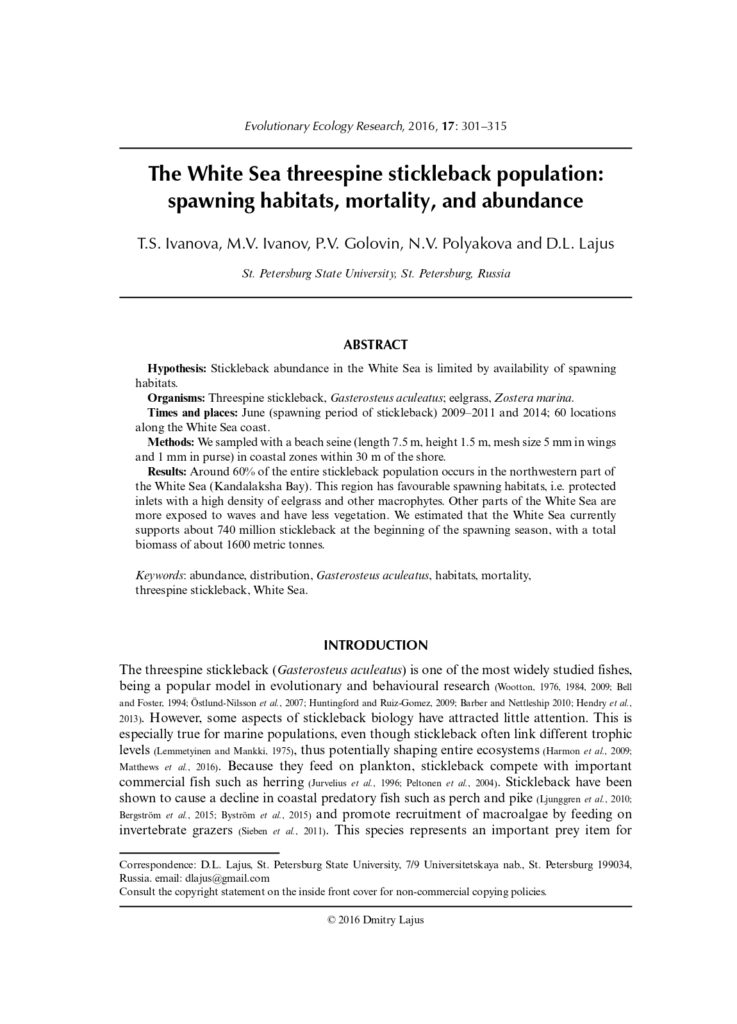The White Sea threespine stickleback population: spawning habitats, mortality, and abundance
Ivanova T.S., Ivanov M.V., Golovin P.V., Polyakova N.V., Lajus D.L.
Evolutionary ecology research (2016)
Ivanova T.S., Ivanov M.V., Golovin P.V., Polyakova N.V., Lajus D.L. 2016. The White Sea threespine stickleback population: spawning habitats, mortality, and abundance // Evolutionary ecology research. v. 17. No. 3. p. 301-315.
Link to publication in the journal
Abstract
The spatial distribution of threespine stickleback in the White Sea and more favorable habitats for its spawning were studied. The study was carried out at 60 stations in June (stickleback spawning period) 2009-2011 and 2014. We caught stickleback with a beach seine (length 7.5 m, height 1.5 m, mesh size 5 mm in wings and 1 mm in purse) in coastal zones within 30 m of the shore. Around 60% of the entire stickleback population occurs in the northwestern part of the White Sea (Kandalaksha Bay). This region has favourable spawning habitats, i.e. protected inlets with a high density of eelgrass and other macrophytes. Other parts of the White Sea are more exposed to waves and have less vegetation. We estimated that the White Sea currently supports about 740 million stickleback at the beginning of the spawning season, with a total biomass of about 1600 metric tonnes.
Keywords: abundance, distribution, Gasterosteus aculeatus, habitats, mortality,
threespine stickleback, White Sea.


 8 (812) 321-32-79
8 (812) 321-32-79
About the author